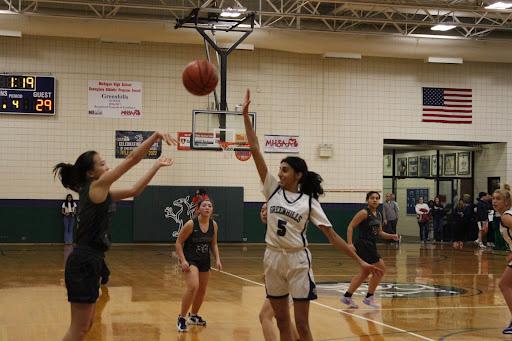
Friday, February 24, 2023


Friday, February 24, 2023
With academic honesty concerns, school focuses on AI tech, responsible usage
MUSTAFA ZIRAPURY ‘23
Editor-In-Chief
With just a few lines of instructions, OpenAI’s ChatGPT can write anything you ask it to within seconds. Unlike search engines like Google, when you ask ChatGPT a question, it does not give you thousands of links that have the answer. Instead, it returns the answer in clear, easy-to-understand words. What’s more, ChatGPT can code in multiple languages and generate own ideas from scratch; it can write an email telling one’s boss why they won’t make it to work, it can help one make a presentation; it can even make a workout plan.
Many students have begun to use ChatGPT at the school, and have spent some time testing its capabilities. Raj Tiller ‘23 spent over 10 hours coding his own version of minesweeper in Java Script. After many iterations and tweaks, he was able to get the code working. However, when he and fellow computer science classmate Adrian Bardwell ‘23 asked ChatGPT to code it, it took the bot just a few minutes to write the whole code.
“Minesweeper was really hard to code, with just my basic understanding of computer science I knew it was always going to be tough,” said Tiller. “I was really satisfied when I got it to work though, and it was worth the effort.”
Tiller found the project to be useful. It was something he himself was interested in doing and spent his own time doing it. He felt it strengthened his understanding in computer science and helped him learn new concepts.
“It was definitely surprising to see ChatGPT just code the same game in five minutes. It did what took Raj a few hours in just a few minutes,” said Bardwell. “Sure, it did have a few hiccups at the beginning, but I kept feeding the bot more information about the code and it just kept coding it.” The bot’s code had errors when it first coded it, and at times, it wouldn’t run as expected.
“The first time I tried to run ChatGPT’s code, it didn’t create the game exactly how I wanted it to and ran into some errors. However, what I did was plug the code back into the bot and told it to fix the code. Within a few seconds, it gave me a corrected version of the code,” said Bardwell.
we asked the bot to come up with lesson plans, it came up with them, but they definitely weren’t great,” said Lewis.
The teachers also talked about how they can see if the students are using the bot to get all of their work done.
“It’s pretty easy to tell if a student is using ChatGPT or not because of how generic the answers are, since a robot does not provide a lot of detail or voice in the essays, ” said Lewis. “The best way to prevent this type of cheating is to assign homework that asks very deep and specific questions. This way the bot won’t be able to answer the question.”
Economics teacher Alexander Monte-Sano has played around with the bot since its release and has found some uses with it.
“The first thing I asked the bot to do was solve this complex math problem. However, it was not able to solve the problem I had asked it,” said Monte-Sano. “But I played around with it more and I asked it to make me a lesson plan for my economics class. It did produce a pretty generic lesson plan, but still, it did give me something which is impressive.”
Monte-Sano has also asked the bot more specific questions to see if it could come up with responses.
“I asked the bot to find me clips from different TV shows for some of the topics we were going over in micro economics, it gave me 10 different clips from different shows, however all of the links were out dat-
er Jennifer Gray said when Google Translate first came out language teachers were put in a similar situation.
“When Google Translate first came out, my first reaction was, ‘am I out of a job?’” said Gray.
It was a real concern for language teachers on how they would teach students, because now they could do their language assignments with just a few clicks of a button.
“Students could just use Google Translate now to do all of their work, anything I would assign as homework could be done on a computer,” said Gray. “However, there were a lot of things that students weren’t learning when they just used Google Translate, they weren’t learning how to speak the language fluently and they weren’t learning about the culture of the language they were learning, there were still a lot of things they were learning in class that Google Translate couldn’t teach them.”
It was also very easy for Gray to tell when students were using Google Translate to complete an assignment.
“When students had words that we had never learned or were using grammar techniques that were far too advanced for them, I was able to tell that they were using translation,” said Gray. “To stop this I could just make all of their test translations written on paper, where they would struggle without Google.”
However, Gray did not want to run her class like this, she did not want to constantly be checking

The school does have concerns that students may use the bot in ways that may be considered academically dishonest. To understand more about the bot and how teachers can use it to their advantage, the faculty conducted meetings throughout the day on Jan. 26.
“These meetings were the first of a series of meetings that we plan on having,” said English teacher Monica Lewis. “The first meeting was mainly to show teachers the capability of ChatGPT and how they can use it to their own advantage.”
The teachers spent time using the bot together and asked it to do multiple tasks, such as coming up with lesson plans and writing emails.
“We wanted to show the teachers not only what the bot is capable of but also what its limitations are. When
ed and had been taken off of YouTube,” said Monte-Sano.
Monte-Sano has also worked with students to help them use the bot to their advantage but not using it to the point where it would be considered academically dishonest.
“A student had to give a presentation on the major economic events of the 1960s, if they used Google to search for this question, they would get multiple links with the information, and then have to synthesize it a bit by themselves, with ChatGPT however it is able to synthesize the information and make it clearer for the student,” said Monte-Sano.
“I personally believe it’s better for students if they are able to get rid of the boring things and are able to focus more of their time on the higher level thinking aspect of the project.”
ChatGPT can be used responsibly by students, there are many advantages to using the bot. Spanish teach-
to see if they were cheating on an assignment or not.
“I didn’t want my job to be me policing everyone and trying to figure out if they were cheating or not, instead I had several discussions with my students regarding the use of Google Translate,” said Gray. “Google Translate can be used as a tool, if you forget a few words and are blanking on their meaning, you can use Google Translate to help you figure out the meaning.”
In a similar way students can learn how to use ChatGPT as a tool that helps them study and helps them get their work done rather than use it to cheat on their assignments. ChatGPT and other AI’s will only get better as time goes on, and more and more people will use them, however these AI’s cannot replace what is taught in a classroom. Teachers will have to use AI checkers to catch cheating, but the job a teacher does cannot be replaced by one of these AI’s; yet.
SARAH
HORAN ‘23 School Editor MARAKI TAMRAT‘23 School Staff DHRUV NALLAMOTHU ‘25 School EditorAfter five years of serving on the Plum kitchen team, Francine Mays is putting down the ladle.
As one of the inaugural members of the team, Mays’ familiar face has stood out to teachers and students alike. Unlike the typical “lunch lady” that is seen in movies and TV shows, Mays takes her time to get to know the students, from greeting them on a daily basis to asking for their names.
possible, I need to take some time away.”
Mays has been a part of the Plum market staff for about eight years. Moving between different facilities before settling at Greenhills in August 2018. She had previously been a chef at Grosse Pointe Academy in Grosse Pointe Farms and was looking for a new line of work.

“It was time for me to pass the baton,” said Mays. “I believe that there’s a season for everybody and that my season is up. In order for me to be the best Francine
“I took a job at Gleaners community food bank,” said Mays. “I was out in the community doing food drops and food education as a chef. I cooked food, I took food samples out into the community and encouraged families to take food.”
Since this was a grant based job, after a year I got laid off. Following this, I reached out to Kelly Toone, the vice president of food services for Plum Market, and expressed that I was out of a job. I wanted to come back to Plum
and had a really good working relationship with them. He told me about a school on the horizon [Greenhills] and told me to look it up and read about it so that I could potentially work there if we got the contract.”
Mays has been in the food service industry for most of her culinary career. Specifically, for the enhancement of the community and to support students for healthier dining.
“I first googled Greenhills School in 2017 and did a couple of interviews and was really looking for something that suited me,” said Mays. “I had worked a couple of filler jobs, till I came to Greenhills. I started my training in spring of 2018 at Detroit Country Day.”
She was able to learn about what it takes to run a school kitchen, as well as the ins and outs of recipe making and kitchen management. She thanks her two mentors, Jen and Chris for the amazing foundation she was able to expand from.
“I opened the Plum kitchen with Chef Tony in August 2018,” said Mays. “We cleaned and sanitized the kitchen, and got it ready for the health inspection, and the rest is history. We started cooking food for you guys.”
She got into food in order to help other people to learn and try to focus more on what they were putting in their bodies.
“I always have cooked, I learned how to cook from my mom, and learned how to bake from my Aunt Mattie at 11 years of age. I was learning how to make pound cakes, carrot cake, German chocolate cake, so I was baking these cakes from scratch at a very young age. I
spent my childhood summers with my grandma, and I truly believe that my mother and my grandmother are the reason I love food.” Family has always been an important part of her life and her love has been reflected in her food.
“When I went to culinary school, we had a project on our passion for food,” said Mays. “I did a tribute to my grandmother, in order to honor her for all of the summers she spent with me in teaching me how to cook.”
She honored her grandmother at Greenhills as well. Mays made sure to put her past on the plate for all students.
“[At Greenhills] I made a tribute to my grandmother for Black History Month. In February of 2020, I made my grandmother’s roasted chicken using her dressing recipe and the peach cobbler. It was really special for me to see everyone enjoying it.”
Although Mays will not be present in the kitchen anymore, Mays’ legacy will live on through the entirety of the Greenhills kitchen. She will always be remembered for her genuine smile and for all the work she does behind the scenes. Now that she’s moving forward, she wants students to hear her final message.
“Food should be cooked with love. You have to learn the groove of a kitchen,” said Mays. “It should be cooked in a harmonious environment. Like an orchestra plays, that’s how a kitchen runs. I love to cook and I encourage you to do what you love.”

AI can’t make things worse than they are

AI can tell you how to make a bomb. It can, and will, write students’ essays, and it will write them in those students’ styles. It will create deeper divisions within our society through ultra-targeted fake news and propaganda. Not to mention that it will inevitably lead to a surveillance state where we are tracked relentlessly by AI that knows us from the way we look, all the way down to the way we think.
But why? AI isn’t sentient, however good it may be. It won’t be doing any of these things alone, we’ll be right there asking it to. Because AI is only an enabler. It only lets us achieve what we always wanted to. So AI doesn’t really change anything, it just makes it easier to do what we’ve always dreamed of, bad or good.
As much as AI allows us to fall prey to every dark impulse in our twisted little souls, it will make it that much easier to do good. Because for every disturbed person who will build a bomb using it there will be ten more using it to learn how to wire electronics without the explodey bits. Because for every person who cheats, who was going to anyway, there will be ten more using it to research, to refine their style, to collaborate with it, disclosing that they did. Because for every new fake news outlet drilling into our collective consciousness there will be ten more pumping out the same drivel they always have. Because for every surveillance state created, well actually I don’t have a great rebuttal for this one; maybe just watch out?
viduality to the mean. This process will slowly but surely twist us all into an average person, destroy that spark that makes our expression individual and special, make us all mindless automatons, perfect recreations of our collective reflection, slaves to our AI overlords.
But that’s a little bit too apocalyptic for my taste. When have we been made worse for listening to other perspectives? When have we succumbed so easily to conformity? Never. There are more good people than bad in this world, the

The argument that AI is simply a tool, a reflection of humanity, is a dangerous and misguided one. The reality is that AI is not just a mirror, it is a force unto itself, an enabler of our worst impulses, a facilitator of destruction and division. A weapon in the hands of those who would use it for nefarious purposes, and a tool of oppression for those in power.
amplify the prejudices and discrimination that already exist in our society, leading to a world where the marginalized are further oppressed and the privileged are further empowered. It is not just the AI itself that is the problem, it is also the way that it is being developed and used. It is being created and utilized by a small group of powerful individuals and corporations, who have their own agenda, their own biases, and their own interests. They are the ones who are shaping the AI, and they are the ones who will control it.
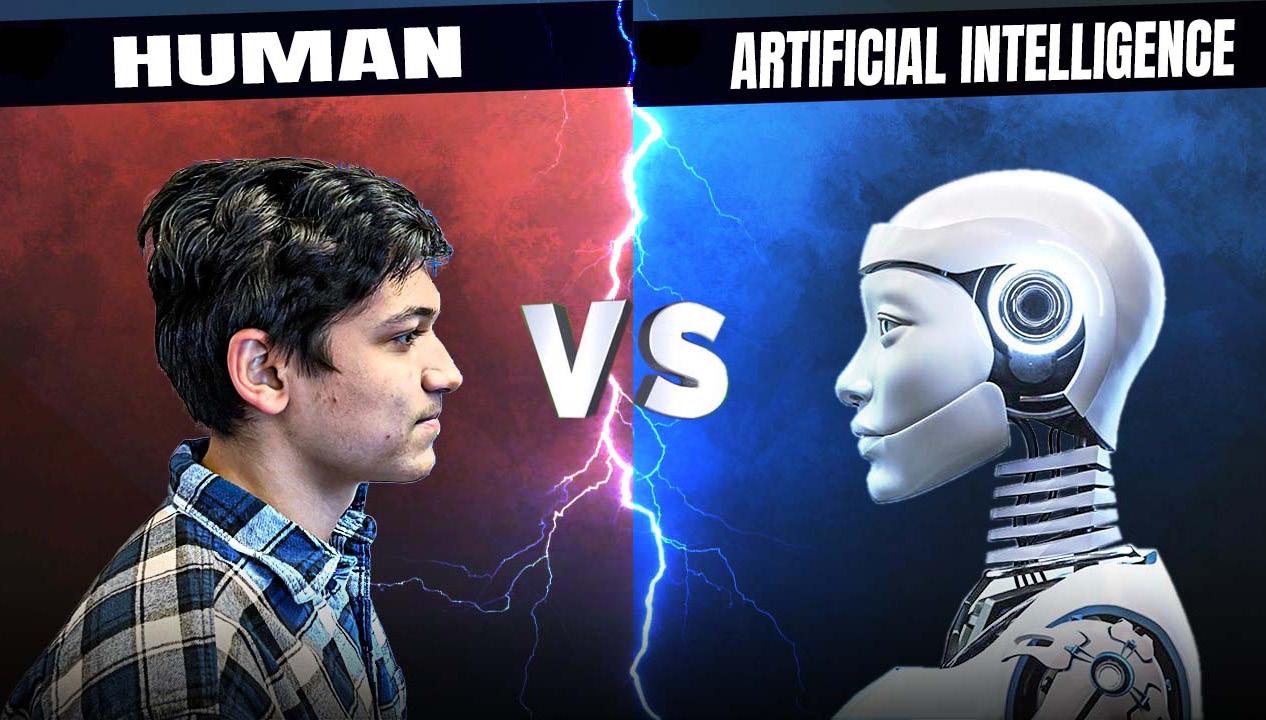
The point being AI has a lot of potential, but it’s a mirror. It shows us what we really are, the good and the bad. But “we” doesn’t just mean you and me, it means all of us. It means the racist, the bigoted, the trolls, the insurrectionists, and then us, a tiny sliver of the internet of 2019 that ChatGPT draws from. AI will not represent our values as a community, whatever those are; it will represent the billions of discordant voices that already vye for our attention.
There are two ways to look at this. When we use AI we will be allowing the hatred of the outside world into our community. We will allow it to make small, biased decisions that will incrementally destroy our way of life. It will become a crutch for us and, forming our words and eventually our minds into its image, a regress our indi-

words it creates will reflect that. AI will allow us to hear the voices that we otherwise refuse to, broadening our horizons, not constraining us to petty differences. To say that AI would be able to control us would be a vast underestimation of our power. Ultimately we control it. We can pull the plug. We control the resource that it thrives off of, ourselves.

AI is only a tool. A tool with the full force of humanity behind it, but still only a tool. It would be a real shame if we were too scared of the possibilities to learn what we could do with it.

Try to guess the fastest-growing app in history. Twitter? Nope. Facebook? Wrong. Instagram? Try again. While not a social media app, OpenAI’s infamous ChatGPT gained over one million users within just three days of its release, the fastest to reach this mark by a landslide. ChatGPT is the first large-parameter AI that was made accessible to the general public. It has a chatbot-type interface that runs on many language models. At its core, you can ask it a question, or give it a prompt and it, to the best of its abilities, will return a text-based response within a matter of seconds. In addition to text-based responses, it can also generate code scripts in multiple languages including Java, Python, and C++. It may not be perfect, but it is the first, truly incredible display of how powerful modern-day AI is. Within a minute, it can write out a 600-word essay on any topic you give it.
ChatGPT is constantly learning. Every time a user inputs a prompt, it stores the information in the model and learns from its shortcomings and oversights. For example, when ChatGPT first came out, it was not able to solve complicated math problems such as calculus-based derivatives, however, after the bot learned and gathered more information, it was quickly able to take the first and second derivatives of functions due to user and developer input. OpenAI has made a third version of this bot available to the public right now, and they are planning to release a fourth version of the bot soon. OpenAI’s claim is that the fourth version will not just be able to write 600-word essays,
but 600-page novels. The current version of ChatGPT is running on 175 billion parameters, the next version will be able to run on around 100 trillion parameters. It is remarkable that within just four months, it amassed so much information. Because of this, there is no knowing how advanced this bot will become within the next few years.
Let us not be deceived by the false promises of AI. It may seem like a tool that will make our lives easier, but in reality, it will only serve to enslave us. It will be used to control us, to manipulate us, and to take away our autonomy. Our every move tracked and recorded, our thoughts and beliefs monitored and regulated.
The idea that AI will simply reflect our values as a society is misguided. The truth is, AI is only as good as the data it is trained on, and that data is often biased and incom
plete. This means that AI will perpetuate and
model can generate hyper-realistic images from human input. With AI imitating humans more accurately day by day, several alarms have been raised, especially regarding students and their use of the chatbot.
While amazing and novel, ChatGPT is still very basic. The content it generates is bland, common, and lacks the human aspect and cleverness of what it writes. It does not write personal, complex essays, it just writes a generic message and uses common filler words to take up space.

The tech industry has dubbed ChatGPT the “Google killer”, as many people believe that AI models like ChatGPT will replace current search engines and that these traditional methods of gathering information on the internet will become obsolete. In essence, ChatGPT is also a search engine, as whenever you ask a question it searches through the internet to find the answer, however instead of giving you the link to where you can find the answer, it returns the answer in a conversational and concise way. However, ChatGPT’s model is limited to knowledge 2021 and prior. The future is AI. OpenAI’s DALL-E
If you ask ChatGPT to regenerate responses to the same input multiple times the answers may be worded slightly differently, but the general content stays the same. The writing it gives you lacks a “human voice”. For this reason, we don’t think ChatGPT can completely replace writing essays for school and college applications. As of right now ChatGPT, is more like a calculator, instead of a full blown supercomputer. When the first commercial calculator was released in 1820, it had a similar effect on the general population as ChatGPT has today: one of awe. However, looking at our use of calculators today, they are not a replacement for math, they are simply a tool to make it more efficient. We believe that ChatGPT will follow a similar course. Currently it is far more useful to ask it for ideas for your essay topic, use one of its responses as a starting point, or have it edit your completed piece for grammar and flow than to write a complete essay. There is a clear divide between when a student submits an essay copied directly from ChatGPT and when they submit their own work. With AI improving every input and new versions being released every few months, that divide will become much slimmer.
In the near future, not everyone is going to be using AI to get everything done. While it may replace some basic processes, it cannot fully replace the human brain. Google trans-
But it is not too late. We can still choose to reject AI, to resist its control, and to fight for our freedom.
We can choose to put a stop to this madness before it is too late. We can choose to reclaim our autonomy, our creativity, and our humanity. We must rise up against the forces that seek to control us, and fight for our right to live as free individuals.
So, what can we do? We can pull the plug, yes, but that will not be enough. We need to take control of AI, to shape it, to use it for the benefit of all, not just a few. We need to ensure that it is developed and used ethically, that it is transparent, and that it is accountable.
We need to do this now, before it is too late. Before the AI becomes too powerful, too autonomous, too uncontrollable. Before it becomes a threat that we cannot overcome.
We must take action, unite, demand that our governments, our corporations, and our society take the necessary steps to control and reshape AI. We cannot afford to wait any longer. The time is now, the stakes are high, and the choice is ours. Will we allow AI to destroy us, or will we take control of it and shape it for the better? The choice is ours, and the time is now.
In conclusion, AI is not a force for good. It is a force for evil, one that threatens to destroy everything that makes us human. We must reject it, resist it, fight against it. For the sake of ourselves, our children, and our future, we must take a stand against the rise of the machines. It’s a matter of survival, it’s a matter of humanity, it’s a matter of time. The clock is ticking, the choice is ours. We must choose wisely.
late first came out almost 17 years ago, yet at every high school, students still elect to take a language class, because in these classes students don’t just learn the language, but also about the unique cultures and traditions that come with it. In the same way, ChatGPT will not replace English class because we don’t just write essays, we have to use our brains to produce essays about our own interpretation of certain texts. In any of our lifetimes, ChatGPT will not be able to completely replace the human aspect of writing. Even given all of the data in the world, it can never write exactly what an author is thinking or feeling.
ChatGPT will become more prevalent and powerful over time, and there is no way to completely limit its use. Rather than find a way to ban it from being used by students or employees, we need to work toward incorporating it into our everyday practices, making it our generation’s calculator.


In today’s age, the importance of diversity and inclusivity are much more well understood. In the midst of Black History Month, Greenhills is showing support for fellow African Americans however, the school also wants it to be known that all groups are supported at all times and not just during specific months.
“We don’t think about [Black history] just during February,” said director of Diversity, Equity, and Inclusion, Nadine Hall. “From the perspective of the office of the DEI, we are really working on finding ways to amplify all voices, while putting an emphasis on those who are most marginalized here at the school.”
The office of the DEI isn’t the only place where diversity is being taught however. Librarian Stefanie Halliday brings awareness to students by creating a display of books.
“Oftentimes I will do displays to call attention to different subjects, voices, or even different genres,” said Halliday.
“During Black history month, I like to highlight black authors and books that have black characters just as a way of celebrating all the different things we have in the library that are written by and about black authors.”
Throughout various classrooms in the school, teachers are making it a point to teach their students about such topics. With the 9th grade class having the theme of community, diversity is an important talking point.
“[The freshmen grade] weaves in these topics throughout the year rather than focusing them on specific months,” said Freshman grade dean Liza Ruggiero. “We reinforce at the beginning of the year that the freshmen get to choose what community they want to build.”
The 9th graders are not just learning about diversity in grade meetings, but also in their Fresh classes.
“Our current unit in Fresh is about embracing identity, so we talk about all sorts of different identities such as sexuality and LGBTQ+ topics,” said Ruggiero. “We talk about race pretty consistently throughout the year to help students explore their own identities.”
Fresh is not the only class where students are learning about diversity. Span-
ning from the humanities to STEM departments, students are taught about the topic.
“In Financial Applications, we have a unit where students are given the opportunity to explore a person of color and their financial background,” said math teacher Eric Gajar. “The people chosen range from Beyoncé to persons of color who opened banks.”
The classroom isn’t the only place where marginalized groups are supported by the school. Greenhills offers a wide variety of affinity groups that allow students to come together and talk about their experiences. These meetings allow students to share their cultures, whether it be a single one or multiple, with fellow students from all levels of high school.
“It is so important that we are able to celebrate our culture,” said Hispanic and Latinx Organization leader Lucas Nor ‘24. “It gives me pride that we can share the beauty of our ethnic identity together in a safe environment.”
The school offers a wide range of affinity groups so that students can find a place to fit in no matter who they identify with.
ity groups at Greenhills,” said East Asian and Pacific American Community member Sophie Chen ‘25. “Not only does it allow me to share my culture, It also lets me get to know people who I probably wouldn’t have talked to outside of that space.”
Greenhills doesn’t just offer affinity groups for specific races, but also those for people who identify as multicultural.
“It can feel awkward to be multicultural because you don’t know where you fit in sometimes,” said Multicultural

“My affinity group gives me a space to feel safe and heard,” said Black Student Alliance member Mikayla Eccelston ‘25. “I can speak my mind without any worries and it’s great to be able to share my experiences with other people here at Greenhills.”
Chakor Sankaran Rajendra ‘23 shared a similar feeling about affinity groups at Greenhills when talking about the South Asian Affinity Network.
“SAAN gives me the opportunity to express my cultural identity in a space where I feel safe,” said Rajendra. “We even have two performances coming up in order to show others our culture.”
Not only do affinity groups allow people to share their culture within a safe environment, but it also allows people to connect with others.
“I love the fact that we have affin-
affinity program leader Ava Englesbe ‘24. “Being able to be with others who shared the same feelings as me made it easier to figure out my identity.” Although work can still be done in regards to diversity, Greenhills is on the right track and will continue to progress as needed.
“I put out something for the middle schoolers every single month. It spans from Black History, Pride, Hispanic Heritage Month, and so on. I think we’re still in a place where we’re not there yet,” said Hall. “The history of marginalized communities is not as incorporated as fully as it should be in American history. That’s the goal. The goal is to get to a place where we don’t need it [Black history month] to highlight it.”
There are multiple components that make up the final results of a production: at the forefront, there are the leads of the show, and behind them, the ensemble who assist them choreographically and vocally — and the scaffolding that supports them all, the tech crew who work diligently, making costumes and props, building sets, manning lights, and more. Dedicating to each one of these roles takes commitment, and most importantly, time. I joined the ensemble for Shrek The Musical, and I’m here to determine if it’s worth it or not.
Being a part of the ensemble is a great way to experience what goes on behind the scenes of a production without having to worry too much about the problems of managing time, or other after-school activities. Only needing to be called two to four times a week allows for time to enjoy rehearsals after school, while also having time to study at home. Since most rehearsals begin at 3:30 p.m. or later, time allows me to catch up on studies or discuss things with teachers during C&C.
to sing without being put in the spotlight — both figuratively and literally. Since I’m not very comfortable in front of large crowds, nor am I any good at singing or dancing, I don’t have to worry about anyone paying attention to me, hence I can enjoy an unencumbered group performance.
Considering the fact that I auditioned for the ensemble on Jan. 19, a few weeks after rehearsal had already started, it did feel quite rushed, as there wasn’t much time to effectively learn the material from previous rehearsals. If a student who didn’t have any knowledge at all about
and interact with new people. The most satisfying part about working backstage is having the opportunity to see the things you’ve contributed to being displayed on stage, which feels rather rewarding, especially if you’ve worked on it as a group.
Compared to being in the ensemble, being a part of tech takes up less time in the long run since coming to rehearsal is not required. Optional “build days” are open to participate over the weekend as well, which is fairly convenient since it does not disrupt any plans during the school week.
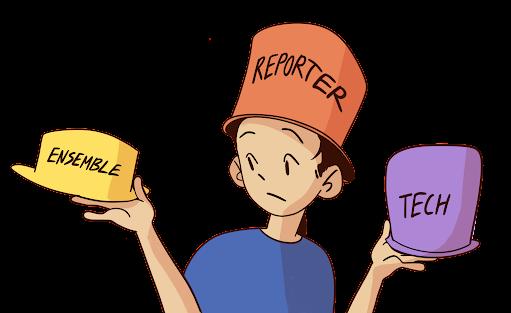
An exceptionally worthy benefit to being a part of the ensemble is the atmosphere — having the opportunity to be with and learn from the upperclassmen who are more experienced in theater, both in the acting and technical aspect, is extremely beneficial in learning more about the process of combining choreography and other components of theater together. Furthermore, you get the opportunity
music theory or dance were to audition for the ensemble, it would have been relatively difficult to be consistent and keep up with rehearsals. However, despite that, the convenience of only being called only a few times a week makes room for the chance to practice at home as well.
I was assigned to help with costumes both times when I signed up to help with tech for “Radium Girls” and the “25th Annual Putnam County Spelling Bee”, and I found that being in this position allowed me to communicate more and form friendships with the actors which varied from grade to grade, allowing me to meet
Lifestyles
Staff
After three years of absence, international trips might make a return to Greenhills culture in 2024, head of upper school Deano Smith said. Language teachers and students are excited to be able to open up this opportunity again.
“There are a lot of people thinking about these trips and it’s something that I support,” said Head of Upper School Deano Smith. “I want to make sure we have a framework in place so that we can talk to the faculty next August with a plan for how Greenhills will do international trips.” One of the biggest challenges the administration is facing is how to make the cost of these trips equitable.
“Already, people are paying for tuition at Greenhills and a large fraction of our population are on tuition assistance of some sort,” says Smith, “If we have a trip that’s going to cost $3000, I want to make sure we aren’t cutting someone out because they’re not in a socioeconomic status where they can drop three grand on a trip.”
Planning these trips is not easy. There are many factors that go into making it happen and many teachers start planning months, even a year, in advance.
“There are a lot of logistics, like getting visas approved, and the flights to China are costly, so we would need to wait until it is reasonable to go,” said Chinese teacher Hsiu-Chao Chang.
There is preparation that goes on behind the scenes that students do not see.
“Everything from figuring out where you’re going, where you’re staying, and then meetings with students and talking about policies like whether they can use their phone or not,” said Spanish teacher Jenniffer Gray. “There are so many things that go into it and it takes a lot of time.”
Travel agencies and companies are almost always the roots of how these trips are organized.
“They are always willing to give different kinds of help, getting the trip publicized, getting it started, meeting with parents and students who might be interested, and then moving forward from there,“ said Modern and Classical Languages Dept. Chair Jeff Allen.
No trip is the same, each experience depends on the language and the respective teachers, as well as the circumstances during the time of planning.
“I have been here for quite a while and these trips have evolved over time and gone through various phases. In the pre-Covid world, it was still evolving and yet all languages were doing trips at some point,” said Allen. “We try to keep freedom realizing it is quite an ask of any given teacher to do that, yet at the same time it seems to have been an excellent experience for the people who could experience it.”
With all the hard work that goes into arranging these trips, teachers still find the outcome worthwhile.
“When I talk about trips, I think about the experiences for students to immerse themselves, whether that being language and culture or anything that connects the classroom learning what they’re doing and the outside world,” said Gray.
More benefits than disadvantages come out of these visits for students which is why Chang is pushing for them to come back.
“Students can use the skills that they have learned and it offers an emergence of a completely Chinese culture and language that is a really big impact on the students,” said Chang. “It’s very hard to imagine this environment and it helps to motivate the students to come home and study the language harder.”
Students also share the same desire as teachers for language trips to make a comeback.
“I feel like I’m learning a lot in my Spanish class and I want to be able to do something with the content that I am learning,” said Meera Tewari ‘25. “We’re already learning about the Spanish culture and I’d like to actually experience and see it.”
Tech week is a week where all the cast and crew are called to run though the shows and to finalize any decisions about blocking, sets, etc.. From experience, being a part of the technical crew will often consume more time than being a part of the cast, as they are often expected to arrive earlier and leave later during this period, which can be somewhat inconvenient if you expect to have any tests or quizzes that week. Hence, being apart of the ensemble will reduce the amount of stress during tech week.
This is the first time I’ve experienced being provided a role in a high school production, and comparing it to the experience I’ve had as a member of the tech crew, I’d much rather work backstage. I lack a great deal of experience in acting or singing, so I’m vastly biased toward working on tech, as I find it to be more gratifying and entertaining. In addition, I’m not a very consistent person; preference varies from person to person, but due to my inability to manage time properly while also committing to another activity after school, I would rather participate in helping with tech than being in the ensemble.
In the past, Latin students have traveled to Italy, Greece, and Turkey which have offered more than just the language itself.
“Even though Latin is a dead language, there is a lot of history behind it, and being able to get to go somewhere more far off, like Italy, would be really neat,” said Avi Weiss ‘24.
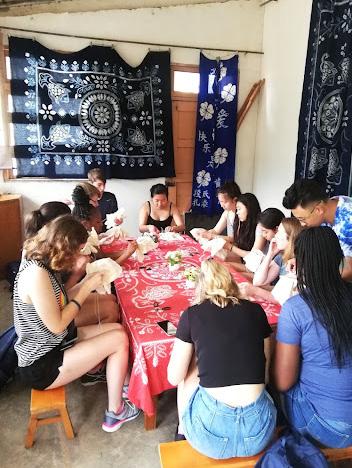

FEB. 24, 2022 FEB. 24, 2022


Stranger Things Orrin Batts ‘23
“When a young boy vanishes, a small town uncovers a mystery involving secret experiments, terrifying supernatural forces and one strange little girl.” -Netflix
Five words to describe the show:
“Exciting, not-scary, funny, surprising, mysterious.”
Favorite moment:
“The singing scene between Dustin and his girlfriend. It was pretty funny.”
Appeal:
“I saw it on the Netflix Top 10 List which is where get most of my shows.”
Squid Game | Nicole Zhong
Five words to describe the show:
“Unique, realistic, Asian, unexpected, and suspenseful.”
Favorite moment:
“I like the challenges because they seem so absurd, but with the way the characters were written, their reactions felt realistic. I think they accurately portrayed human traits.”
Appeal:

Editor
different content, the profile feature along with personal recommendations are helpful.”
The Mandalorian Tillie Klein ‘25
“After the fall of the Empire, a lone Mandalorian makes his way through the lawless galaxy with his foundling, Grogu.” -Disney+
Five words to describe the show:
“Fantastical, suspenseful, emotional, violent, and intriguing.”
Favorite moment:
“When the Mandalorian first meets Grogu, he is supposed to kill him, but then he finds out that Grogu is just a baby so he doesn’t. It’s pretty cute.”
Appeal:
“My dad and I watched an episode every night. I like Star Wars a lot so I was excited to see more.”

“It was super popular on Twitter and Instagram, so I had to watch it.” Outer
Five words to describe the show
“Entertaining, exciting, emotional, rollercoaster, and suspenseful.”
Favorite character
“My favorite character is JJ, John B’s best friend. He’s super funny but he also has a deeper backstory.”
Appeal:
“I heard about it from a friend. When I first started it I wasn’t super into it, but it got better as the episodes went on and I binged it in one day.”

WandaVision | Christine Loewen
“A blend of classic television and the Marvel Cinematic Universe in which Wanda Maximoff and Vision-two super-powered beings living idealized suburban lives-begin to suspect that everything is not as it seems.”
-Disney+
Five words to describe the show: “Quirky, riveting, action-packed, eccentric, and light-hearted.”
Favorite moment:
“I like when Wanda first becomes a mom and they are a sweet little family.”
Appeal: “My son loves it so I watched it with him.”



When Netflix first emerged as a video rental service in the late 1990s, it set off a trailblazing industry of home entertainment. Now with Amazon Prime, Apple TV+, Hulu, Disney+, and Warner Bros’ HBO Max in the mix, the streaming wars have officially started. As services fight to gain consumers’ attention, there has been pressure on these platforms to produce original content that would entice subscribers to sign up or switch services – the battle for screen time intensifies.
“I am subscribed to the Disney Bundle, which has Hulu, Disney+, and ESPN+,” said Yousif Ogaily ‘24. “With those three, I’ve got the grounds covered. Disney+ is great for revisiting childhood memories. Hulu has tons of original shows, so there is always something new to watch. And of course, ESPN+ is a must-have for all sports fans.”
Ogaily’s favorite platform is Disney+, as it primarily focuses on content from Disney exclusively, including its subsidiaries like Marvel, Pixar, and National Geographic. The streaming service is also available in multiple countries.
“I traveled to Saudi Arabia not long ago and Disney+ was the only available service,” said Ogaily. “I watch the most shows when I am traveling because I have a lot of time in between flights and rides. Disney+ is my favorite as I am able to use it in different regions.”
With the ability to separate viewing profiles, users receive more appropriate recommendations and obtain more privacy.
“I share passwords with extended family members,” said Tewari. “My dad likes documentaries, while my younger cousins like to watch animated movies. They obviously need different profiles.”
Video streaming platforms also enable users to generate their own viewing experiences by curating a list of favorites. They have the option to pause, rewind, or fast forward while watching.
“I am a part of the binge-watching culture,” said Tewari. “I finish shows in a day or two. As a busy student, these streaming services allow me to watch my favorite shows whenever I like.”
that series,” said English teacher Mark Randolph. “To me, this is a wonderful phenomenon. It has expanded my access to the Golden Age of episodic shows.”
Yet, not all are hooked by streaming platforms. While traditional media is losing its ground, the charm of conventional media has not completely faded away.
“I only have Amazon Prime Video, which comes with my Amazon membership,” said math teacher Natalie Caramagno. “I’ve maybe watched one movie on it.” In lieu of TV shows and movies, Caramagno prefers college sports channels.
“It’s impossible to keep up with the streaming services,” said Caramagno.
“There are so many you have to subscribe to to watch all of the popular shows. I read articles on different shows like ‘White Lotus’ and I feel out of the loop sometimes, but it hasn’t driven me to watch any of them. Even with the rise of streaming services, Caramagno resists the trend toward those platforms.


Others pick Disney+ for a different reason.
“I have a 4-year-old and a 2-yearold, so in my household, there is a lot of Disney +,” said director of enrollment management Sylvester Cutler.
Disney+ not only has young children hooked, but it also attracts fans of various franchises.
“I am a huge Star Wars fan and it is only available on Disney+,” said Nate Gajar ‘24. “Disney + is simply my favorite.”
Disney+ provides a wide variety of Star Wars content, including all the movies, animated series, documentaries, and more. It is the ultimate destination for Star Wars fans like Gajar.
But not all students are interested in franchise-based content.
“I am subscribed to Netflix, HBO Max, Hulu, Amazon Prime, and Disney+,” said Lizzie Foley ‘23. “Out of all of those, I use Netflix about five times a week. It’s my favorite because it has the most content –thus the most cost-effective.”
Though Netflix is relatively more expensive than Disney+, it contains a larger library of movies and shows of more
Consumers can also download videos to watch offline.
“Watching videos uses a lot of data, but I could always download them in advance on the mobile apps,” said Tewari. “Then, I watch them anytime, like on my way to a tennis match. ”
What’s more, video platforms are also far more convenient than traditional cable packages. Their growing popularity has led to a decline in cable subscriptions, with more people opting to cut the cord and switch to streaming.
“With these services, I don’t have to wait for episodes to air each week,” said Gajar. “Usually when a new season of a show is released, all episodes are out at the same time.”
Cutler – with Netflix, HBO Max, Disney+, Hulu, and Sling TV – favors streaming services over cable.
“We don’t have cable because it has a lot of channels that we don’t watch and need,” said Cutler. “I don’t want to pay over $100 plus a month just to watch sports.”
The wide range of content that streaming services offer are at a lower cost compared to traditional cable. Naturally, these platforms produce better value, and
“When streaming services were first getting big, I was more interested than I am now,” said Foley. “Now, I want to go to the movies more.”
For decades, going to the movie theater was a type of social experience that fosters a sense of community and shared enjoyment.
“Indeed, the pandemic hit a hard blow to the theater industry, but the real culprits for the low turnout are streaming services,” said Annie Zhu ‘24. “Still, my friends and I go to the movies for that nostalgic feeling. The immersive experience and special atmosphere are worth the drive.”
The big screens, high-quality sound systems, and dark environments cultivate a sense of immersion that is difficult to replicate at home.
Though Randolph has five different streaming services along with cable, he also makes frequent trips to the movies. To him, it’s all about finding balance.
“The relationships between traditional media and streaming services is similar to that between regular film cameras and digital cameras,” said Randolph. “While it seems digital cameras will completely replace film, real photographers understand that film has a tonal aspect that digital cameras cannot achieve. There will always be regular film around, but most of us will benefit from using digital cameras.”
The future of video streaming is uncertain, but watch out, cable enthusiasts, streaming services have an upper hand for now.
“The streaming services industry doesn’t seem like it has made an impact
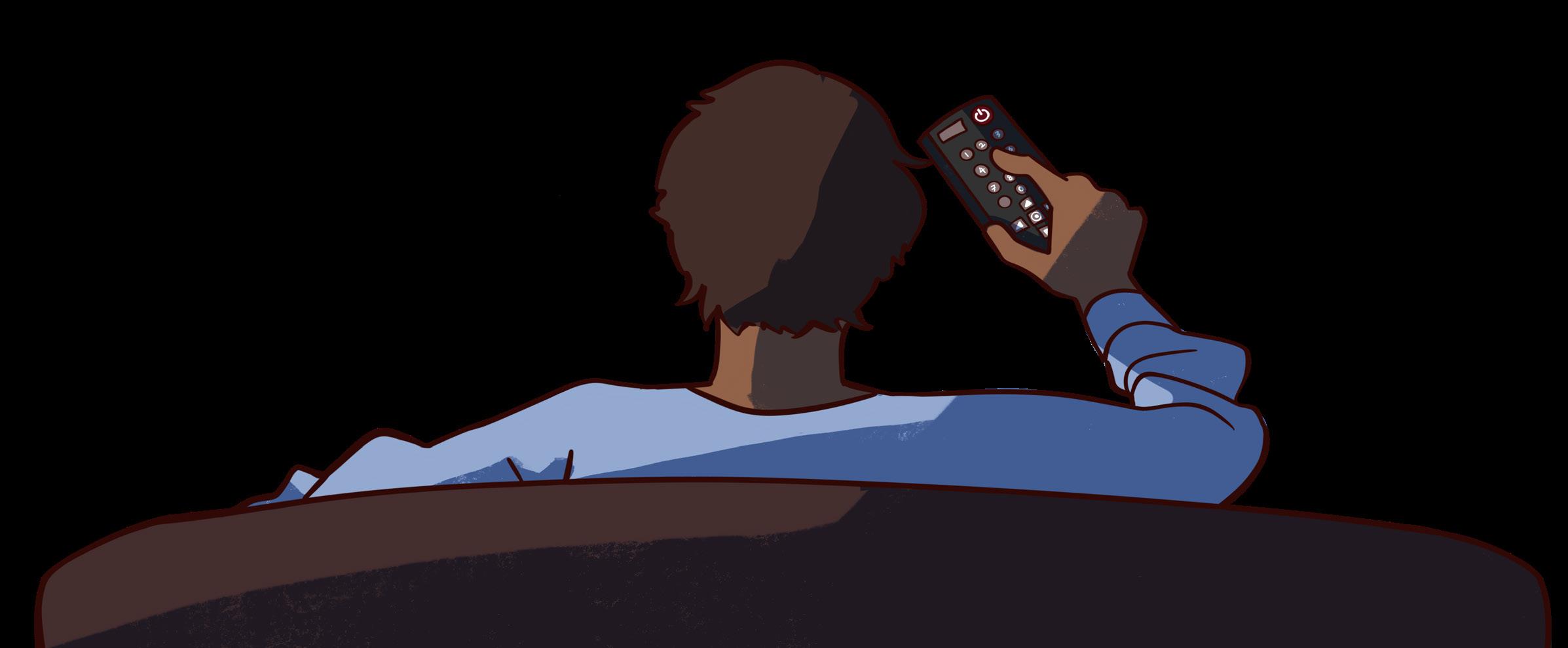
“‘
follows a group of high school students as they navigate love and friendships in a world of drugs, sex, trauma and social media.” -HBO
Max
Five words to describe the show:
“Cool, interesting, teenager, crazy, and romantic.”
Favorite character:
“I like Fez. He’s just a cool, chill guy.”
Favorite moment:
“I love when Lexi and Fez are talking because they’re so cute together.”
Appeal:
“I heard about it from TikTok.”

“‘The White Lotus’
a sharp social satire following the exploits of various employees and guests at an exclusive Hawaiian resort over the span of one highly transformative week.” -HBO Max
Five words to describe the show:
“Amazing, bizarre, dramatic, compelling, and weird.”
Favorite character:
“I like Tanya. She’s a rich lady who loves the White Lotus resorts and a good time.”
Appeal:
“I watched season one with both of my parents. It’s not the type of show you want to watch with your parents but I did it anyway. ”
Succession Jenna Goldenberg
“‘Succession’ tracks the lives of the

“Jason Sudeikis
leading a British soccer
lacks in knowledge, he makes up for with optimism…and biscuits.”Apple TV+
Five words to describe the show:
“Uplifting, heartwarming, characterdriven, soccer, and fish-out-ofwater.”
Favorite moment:
“I like the episode when Ted Lasso’s team loses an important game while they’re traveling, and Coach Beard, stays out clubbing all night because he’s upset and doesn’t travel back with the team.”


Severance Josh Jetton “Mark leads a team of office workers whose memories have been surgically divided between their work and their personal lives. They begin a journey to discover the truth about their jobs.” -Apple TV+
Five words to describe the show: “Suspenseful, interesting, complex, funny-ish, and thought-provoking.”
Appeal-
“I like Dylan because he’s very funny and I’m very interested to see where his character is going to go in season two.”



Picture it. A student is sitting in class at a new triangular desk, and they wonder, did their math teacher order it? Did their French teacher purchase these for more productive conversations? How does the school acquire all the many things students take for granted? One might be apt to jump to the conclusion that tuition dollars covers those costs. However, that new furniture does not come from tuition, but yet another fund.
There are 682 total students across the school grades
6-12. Averaging both middle and upper school tuition rates (not accounting for the students and families that have tuition plans in place) Greenhills, on average, brings in $19.5 million per school year.
However, Greenhills doesn’t solely rely on tuition to keep it running.
advancement Paul Gargaro. “For the last 20 or so years, we have been more intentional about starting and ending the annual fund on specific dates, as well as raising awareness about annual giving through alumni and parents.”
Greenhills aims to fundraise up to around $500,000 each year through the annu al fund. This money is not put into endow ments but instead is used to fulfill the needs of the school. The annual fund plays a critical role in taking pressure off tuition as the sole funding source of the school.

Fundraising and endowments also provide money to keep Greenhills current. Displayed on the wall on the way to the seventh-grade forum, there is a poster with a list of names running down the page. These donors play a small but critical role in enhancing the Greenhills experience. To further support its funding needs, the school relies on an annual fund. Greenhills uses a multi-faceted approach to finances to keep the school operational and thriving.
“An annual fund is a way to raise money that can be used in unrestricted ways to meet our funding needs,” said Director of
“If the budget is a bucket of water, the annual fund is a shot glass of dye,” said Chief Financial Officer John Nickel.
“When you pour it in, the dye gets diluted throughout the entirety of the bucket. The great thing about this is that it’s not directed towards a specific need, its overall opera tions which include salaries, electric bills, general maintenance, really all the odds and ends.”
However, it was not always like this. In previous years, the school would have to look to other efforts since the alumni pool was not as large. This resulted in asking for a certain amount of money to be donated to the along with the tuition costs.
“Back in the early days, annual giving was set along with tuition rates. There would be a strongly suggested amount that was expected from parents along with tuition in order to account for the annual giving” said Nickel.
Since then, Greenhills has re worked the system in order to opti mize the amount of money that is donated. Nonprofits have the ability to write off charitable contributions in tax forms. However, the donations that they receive have the potential to be taxed by the person doing the donating.
“Endowments, as they grow in scale, become very powerful,” said Gargaro. “An endowment is a fund that is invested, and you can only take a certain percentage over and above that initial investment.”

This growth is pivotal, as endowments allow schools to have a consistent source of funding for their operations, regardless of changes in the market. Endowments also provide a sense of stability and security, as the initial investment remains intact, and only the returns are used for spending.
“For example, if you have a $10,000 financial aid endowment, it’s invested within the marketplace and at the end of each fiscal year, that endowment (you hope) has made a return,” said Gargaro. “Its return on the market, plus 10 percent. The endowment is now worth $11,000 and as a school has the ability to spend 4.5 percent of that $11,000, the balance of that return gets re-invested in the endowment, in order to prepare for the next year. It continues to grow over time.”
“With Greenhills being a nonprofit organization, any money that’s donated has the potential, depending on the donor’s tax status, to be tax-deductible,” said Gargaro. “It depends on the donor’s situation, and many private schools operate this way.”
Nevertheless, Greenhills is able to find funding in other ways besides donations. Endowments are a great way to raise funds for specific targeted events or processes. The cafeteria, library, and new athletic facility are all products of endowment funds that have been growing over time.
Going once... twice? Gone! School transitions from auctions to equitable fundraisingPRANAY SHAH ‘23
Editor-at-Large
Unlike Michigan public schools, Greenhills, as a private independent school, does not receive money from the state government for its operations. Greenhills relies on tuition and donations towards the annual fund to keep the school running. However, this is usually not enough to cover the operating costs Greenhills has had in recent years. Greenhills has devised ways to engage with alumni and current families to raise these funds.
In the early 90’s, Greenhills started an annual auction to raise money. The auction consisted of various items ranging from sports tickets to a brand new car. It would take place at a country club, and a professional auctioneer would conduct the event. However, the auction came to an end in 2017 due to a lack of return on investment, emotional, and equity issues.
“We used to have full time employees whose job was the auction. There was some success and novelty, but it kind of burned out,” said chief financial officer John Nickel. “The environment of an auction can become supercharged sometimes and very tense. Also, not everyone can participate.”
These problems have led the school to search for other options in order to fundraise money.
“To develop new ways to raise money we began the 5K GryFun Run and Walk,” said Nickel.
This annual event started in 2021, and participants can either attend at Towsley Field or virtually. The school makes money off a portion of the $35 registration fee and participants are not required to make donations.
“GryFun Run and Walk allows more people to participate as not everyone can win an auction and it is a very positive environment,” said director of advancement Paul Gargaro. “We had prizes for the participants such as best costume, best dog, farthest location people (virtual attendants) were. We had partici-
pants
Greenhills also receives sponsorships from outside corporations. This includes Plum Market, J.S. Vig Construction, and Kapnick.
“Our sponsorships are all from businesses that we conduct transactions with,”said Gargao. “Very rarely do we go out and ask for sponsorships from corporations who are not our vendors.”
Although these businesses do provide valuable donations to the school, Greenhills has now focused its attention on institutionalizing alumni events in order to increase donations to the school to support the annual fund. In order to connect with more alumni, Greenhills hosts events around the United States.
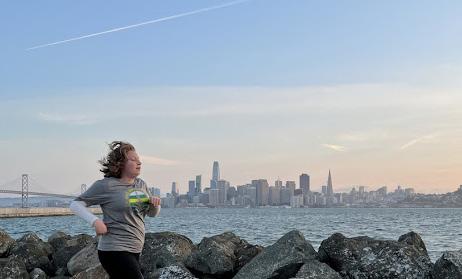
“Alumni participation [in the annual fund] used to be a single digit number. Our reunion programs are much more sophisticated than they used to be,” said Gargaro. “We [now] travel more and went to places such as New York this year. In years past there was a party in San Francisco with around 60 or 70 alums. We have a big event on commencement weekend with a reunion at the school”
Endowments are crucial to the advancement of many projects that they do, and bridging the gap of knowledge between students and the school is to buil key to building a strong future alumni group.
“Learning about all the ways that the school is able to use the annual fund and its endowments to first-hand benefit us the students is enlightening,” said Michael Zheng ‘24. “For example, providing all the extra teaching supplies during the pandemic was something that I hadn’t really thought about before.”
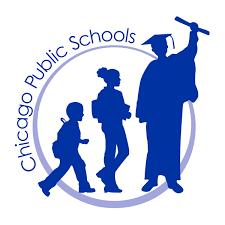

number increased to 163 alumni donors. The alumni outreach does not stop at these large parties and Greenhills has taken a more personal approach. There is now a faculty liaison if alumni wish to connect with Greenhills.
“Mr. Zellers is our faculty liaison for alumni,” said Nickel..“If he is taking a trip to New York, he will try to have coffee or dinner with some alumni. Most of our 3800 alums do not live here and scatter across the globe.”
Due to the geographic variation among the alumni, the school utilizes social media as a way to stay connected with the alumni.
“I try to keep on top of their information like where they are and what they are doing professionally. Facebook and LinkedIn help me keep in touch with that” said Zellers. “We also have a Greenhills alumni facebook group and we post pictures in there of any alumni who visit us or we visit them.”
Alumni feel inclined to support Greenhills as it was a pillar of their career and continues to support their future.
“Having been here so long, I have taught a large number of these alums. I have long established connections with them,” said Zellers. “I also aid our alums in networking with one another to help say the seniors in a few years find a mentor. I help them stay in touch with one another and the school.”
The alumni outreach program, sponsorships, and GryFun Run and Walk are among some of the new ways Greenhills has approached fundraising.
 with pictures running past the Parthenon, [the] Golden Gate Bridge.”
From 2008 to 2009, 16 of the annual fund donors were alumni. However, in 2020 to 2021, the
with pictures running past the Parthenon, [the] Golden Gate Bridge.”
From 2008 to 2009, 16 of the annual fund donors were alumni. However, in 2020 to 2021, the
FEB. 24, 2023

Caitlyn O’Neal brings skills to hardwood, potters wheel
Associate Editor, Online
After a successful career on the court, Caitlyn O’Neal channeled her interests into careers: teaching ceramics and coaching basketball. Now, she is sharing her love of both crafts with a new generation of artists and athletes.
For as long as she could remember, O’Neal has had a passion for basketball.
“I have played basketball since I was four years old and have loved the game ever since” said O’Neal.
O’Neal continued her basketball journey and took her skills to the high school level.
“My sister and I led the team to a state championship, it was almost like a dream come true winning the tournament with my sister,” said O’Neal.
She then decided to play college basketball.
“I started off my college career at a D2 school in West Virginia called Davis and Elkins,” said O’Neal.
After three years at Davis and Elkins, O’Neal looked to pursue her career at a new college.
“I transferred to a small liberal arts college in Indiana called Goshen for my senior year,” said O’Neal.
She transferred with one goal in mind.
“My sister played for the Goshen women’s basketball team as well and it was our dream to play together since we were very little,” said O’Neal.
During her senior year however, this dream was cut short due to a season ending injury. “During the first game of the season I tore my ACL and was out for the rest of the season,” said O’Neal.
This injury allowed her to develop a new understanding of the game as she watched her sister play from the sidelines.
“I realized I love basketball not only because of the thrill of the game, but because I got to share so many special moments with my sister,” said O’Neal.
With extra time on hand, O’Neal used this opportunity to expand her interest in art.
“I always knew that art was in my future and I just didn’t know what it looked like,” said O’Neal. “I was thinking of being a master painter, but then I took my first ceramics class in college and that changed my life.”
The class also gave her a new perspective on life.
“I realized I could use ceramics to express my emotions and use it as a way to connect with future people,” said O’Neal. “With so many mixed emotions after I tore my ACL, I realized that I wanted to connect these two things, my love for people and art and pursue a career in teaching” She finished her senior year with a bachelors in art, but wanted to come back and play one more year of basketball.
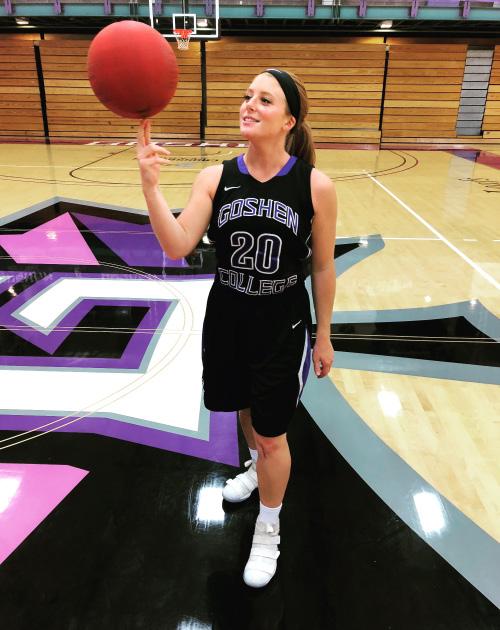
College athletes should be allowed to make NIL deals, compensation

More than a hundred years have passed since the National Collegiate Athletic Associatoin, also known as the NCAA, enshrined the value of strict amateurism, that college athletes should not earn money from sports, in collegiate athletics in its founding charter in 1905. Back then, collegiate athletics was limited to wealthier students, most of whom weren’t planning on engaging in professional athletics and wanted to maintain the status of sport as a more recreational activity for the wealthy.
Since then, however, collegiate athletics have become a billion dollar industry, with universities now earning massive revenues from broadcasting contracts, apparel deals, and ticket sales. For universities, this has meant hundreds of millions of dollars, new facilities, stadiums, advertising, and brand recognition. But until two years ago, the players, often coming from less privileged backgrounds and risking their futures, didn’t receive a cent.
The journey to professional sports is long, strenuous, and fraught with injury. With the massive growth of both professional sports leagues and collegiate sports, more and more students are pushed to join the ever-rising number of prospective professional athletes into a rat race where athletes engage in risky, wageless, labor that earns millions of dollars for universities. Players are now faced with strenuous competition against thousands of other students, with college scouts undertaking massive nationwide searches to find the most qualified young athletes from across the country and players fighting for attention from top universities.
That journey starts in high school, where hundreds of thousands of high school students battle for the limited attention of college athletic departments. The vast majority of these students come from low-income backgrounds, seeking to improve their economic standing, and often lacking a backup plan or support systems to fall back on. According to the National Bureau of Economic Research, over 60 percent of NFL players come from low-income families, and that 70 percent of NBA players come from low-income backgrounds.
to the NFHS, the National Federation of State High School Associations which acts as a national governing body for high school sports, only two percent of college athletes make it to professional athletics. Hundreds of thousands of college athletes perform hundreds of thousands of hours of unpaid labor all for the slim chance to make it to professional sports.
But for the two percent of college athletes that make it to major professional leagues, the struggles don’t end there. Rookie professional athletes leaving college enter a new profession prone to injury, poor deals, and more competitive than anything they might have experienced before, all under greater pressure from fans, media, and managers. In the NFL for example, in which the average career is just 3.3 years long, One in every five players suffer a serious injury every year, threatening their chances of continuing the sport. And in professional soccer, over 25 percent of players are forced to miss playing time because of injuries. College athletes have fought tough battles to get where they are. The majority of them have overcome the odds, competing against other students to earn the recognition of universities, and struggling against socioeconomic hardship. These athletes continue to perform thousands of hours of work without salary, risking everything for just a sliver of opportunity. Given the sheer amount of effort that these athletes put in, it is simply unfair not to allow
and finished one more year of basketball, but without my sister,” said O’Neal.
Her experience with basketball helped her in pursuing this career in teaching.
“I learned to be persistent which helped me get my degree and ensure that my students receive the best education and instruction I can give them” said O’Neal.
Now a ceramics teacher, O’Neal looked to continue with basketball, but not as a player.
“I started coaching the JV basketball team this year and it is an exciting experience, but very different from playing,” said O’Neal.
Learning how to translate her own skills to advice can be a difficult transition at times.
“I am trying to remember how to teach different aspects of basketball,” said O’Neal. “As a player you are being told what to do, but now, as a coach, it is my job to scaffold and break down plays and techniques and to view basketball from a teaching perspective.”
Coaching has also forced her to learn new aspects of the game.
“I had to learn many rules again, but this time from a coach’s perspective,” said O’Neal. “As a player I did not have to worry about how many timeouts we had or how many fouls people had.”
O’Neal has found that ceramics and coaching basketball are similar.
“You’re giving them instructions on how to do something, you model it, demonstrate it, and then hopefully it clicks after repetition,” said O’Neal.
She has helped change the atmosphere for the basketball team.
“Last year we spent the majority of our practices discussing what we could improve on, instead of actually implementing it,” said Inaaya Nazmeen ‘24. “With Ms. O’Neal, we spend practices building up our stamina with conditioning and implementing the changes through a variety of drills.”
O’Neal’s impact on students isn’t shown just on the court, but also in the classroom.
“I have always been interested in art, but this year, when I started taking ceramics, my interests in it grew and I realized I want to pursue this type of art more,” said Caleb Lee ‘23.
O’Neal is now able to share her love for both art and basketball through ceramics and coaching basketball.
NIL policies go too far; focus on money not game
LEO

After years of pleading from fans, coaches, and players alike, the Division One board of directors for the National Collegiate Athletic Association finally approved a policy to allow collegiate athletes to receive compensation for their Name, Image, and Likeness, or NIL.
Like many other college sports fans, I was overjoyed at this news at first. Finally, hardworking athletes who competed in front of thousands or even millions on national television would be able to earn their fair share of wellearned money. However, almost two years later, I could not have been more wrong.
The NIL policy has quickly turned college athletics from a game of training, coaching, and honest recruiting into a competition to see who can offer high school recruits the bag with the largest dollar sign on it.
Universities set up NIL deals for recruits by laying out guaranteed contracts so that, upon enrollment, the player would receive compensation for participation in advertisements, social events, or other brand promotions.
during the season may suffer in recruiting if they fail to match the NIL offers of other lower-achieving schools. Take the University of Michigan, for example. The Wolverines finished 13-1 on the season, with their sole loss coming in the College Football Playoffs, and winning the Big Ten for the second year in a row. Their reward in the 2023 recruiting cycle? A subpar 18th place- finishing behind schools such as Oregon, Oklahoma, and Miami – programs that finished the year with significantly worse records and achievements.
Not only are recruits unwilling to commit to Michigan due to their lackluster NIL support, players who, at one point, were fully committed to the Wolverines have flipped their decisions to universities that are more willing to shell out the big bucks. Highly ranked recruit Collins Acheampong is the main example of this phenomenon. Acheampong, a defensive lineman from California, had been committed to Michigan since early July 2022. However, just three days after Michigan routed their archrival Ohio State on Nov. 26, 2022, Acheampong unexpectedly flipped his commitment from Michigan to none other than the University of Miami.

college athletes to earn at least a fraction of the billions of dollars of value that they create for universities.
Texas A&M and the University of Miami of Florida are excellent examples of this development, as they are at the forefront of all things concerning NIL. These universities had an identically poor record of 5-7 this season, with A&M finishing dead last in the SEC west division, and Miami finishing 5th in the ACC coastal division. Neither team was even eligible for a bowl game.
Despite struggling against unequitable circumstances on a playing field far from level, very few of these athletes ever get a chance to prove themselves in college: for example, only under two percent of high school football players ever get recruited to play collegiate athletics. But the already strenuous journey doesn’t end there. College athletes must play their hardest and avoid injuries all to find the attention of professional teams. But oftentimes even this isn’t enough. According
These students are competing with limited support and a lack of resources, often from lower income backgrounds, and yet are somehow expected to engage in highly dangerous labor for nothing more than an honorary thanks and the miniscule chance to win a professional lottery and possibly play in professional athletics. These players put everything on the line, struggling in a career path where just a slim percentage ever make it to the level where they can make money despite creating massive revenues. It is wrong not to give players a piece of the money that they risk everything to earn.
Despite these abysmal records, both teams are poised to finish in the top fifteen for the 2023 recruiting cycle, with A&M at 15th and Miami at a shockingly high 7th. These schools have proven to be unable to develop players, get fans to attend their games, and most importantly, win. Schools like these draw recruits to their programs in the only way possible- money.
A&M and Miami have two of the three top NIL collectives – funds solely dedicated to paying athletes that attend. Schools that try to recruit highly-rated prospects based on merit are being overshadowed by programs that offer 17 and 18-year-olds thousands of dollars to play for them.
On the opposing side, teams that do well
NIL played a massive factor in this decision – Acheampong flipping his commitment from a school known for developing players to the NFL to a school that can’t even fill their stadium on a regular basis was a move that baffled experts and yet again left only one reason – money. Often, the extent of NIL money is underestimated – fans are unable to wrap their heads around how much athletes are making. According to On3, a college sports and recruiting organization, collegiate athletes can make millions of dollars. Currently, On3 has the top earner as 2023 basketball prospect Bronny James, who is valued at an astounding $7.6 million – without even stepping foot on an NCAA court. Not even a top 30 player – he is ranked 33rd in the class of 2023 by one of the nation’s top recruiting websites 247Sports – James is already predicted to earn more money than most people will see in their lifetime, solely because of his last name. While James is an outlier due to his namesake as LeBron James’ son, no high schooler should even be thinking about receiving this kind of money in exchange for athletic ability.
While collegiate athletes should be paid for playing, there is no doubt in my mind that the amount and influence of NIL money has spiraled out of control from what it was originally intended to be.
Although my point of view may be from a fan disgruntled that his favorite team can’t keep up with the talent recruiting of other inferior programs, there’s no denying that the NIL initiative has had unintended consequences on the landscape of college sports and how the recruitment process as a whole functions.
ADITYA KUTTI ‘23
NICHOLAS ALUMKAL ‘23
Sports Staff
‘Get Jacked with Jarrett’ is what they call it. The afternoon strength and conditioning program led by cross country and track and field coach Jarrett Bussell allows Greenhills athletes to stay fit during their offseason and take advantage of the on-site fitness center. The program currently runs from 3:45 to 5 p.m. from Monday to Thursday during the winter sports season and is open for all upper school Greenhills athletes to stop by and workout after school.
“I run conditioning to build our base strength and ensure that athletes stay conditioned and that we are not getting too flat in the off months,” said Bussell. “We work on increasing mobility and stability—so that when the season comes around we have the ability to prevent injuries. Our goal is to both get stronger and be able to perform at the highest level possible.”
The program offers an opportunity to train before the spring sports season begins. According to Bussell, the program is formulated to create a strong foundation in strength, mobility, injury prevention, and functional movement skills. Each day of the week the session focuses on a certain set of muscles and follows a daily itinerary.
fore COVID-19 in the 2019-20 school year, but were halted when the virus cast students to their domiciles. After returning to campus in 2021, Bussell was able to run the workouts in the winter of 2021 and the summer of 2022.
“Right now, conditioning is just through the winter season, because there are a lot of ath-
tioning sessions as a team; that is something we are looking into and interested in.”
Since the program has started, Bussell has enjoyed seeing the growth of athletes as they attend conditioning throughout their time at Greenhills.
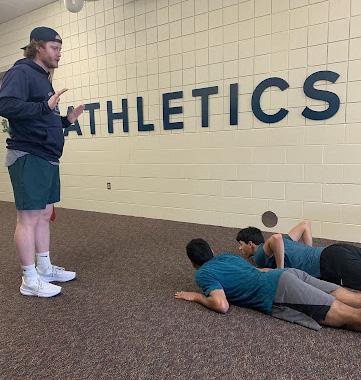
“We start by first doing a warmup either jogging or stretching,” said Matt Prabhu ‘23. “After that we do a circuit centered around mobility, stability, or power circuits which involves various exercises to strengthen certain muscles. Next we have weightlifting in the gym, with either leg or arm day.”
The conditioning sessions started be-
letes who don’t do a winter sport, so they have the ability to come to conditioning,” said Bussell. Obviously everyone has the summer off, so we have conditioning during the summer. There is potential to grow to be a year round thing, where sports teams attend the sports and condi-
IZZY BARU
Lifestyles Editor
“Tick tock” the sound of your alarm clock joltingly waking you up at 6 a.m. It’s still dark out, but you need to get on the road for Saturday morning crew practice. This is what students like Thomas Stoffel ’25, Clara Thorne ’26, and Harper Cash ’26 experience. All three row crew. They endure practice six days a week on the river that can last up to three hours, not to mention the out of state race days.
Regardless if students row by themselves or with others, they still have the same intensive schedule for practices and competitions. Intense schedules that require balance which all admitted was difficult when your academics are across town from your athletics. Most of these students have already begun their day by the time you or I have pressed the snooze button.
“Rowing certainly does affect my workload, I had a harder time with it last year than this year, now I’ve kinda figured out how to manage my time more efficiently,” said Stoffel.
Like Stoffel, Thorne felt a shift with this being her first year rowing in high school.
“It took me a little while to transition into being able to be productive, but it’s definitely helped my time management skills and I’m on my phone a lot less,” said Thorne.
Even with the demands put on students from crew there is still an increasing demand of students wanting to join, Stoffel said.
“One of my favorite things about running conditioning is to be able to see the seniors I’m working with this year, who I’ve been working with since they were sophomores,” said Bussell. “It is incredible to see their growth in the exercises they can do and their form and technique. I also enjoy getting a workout together after school, working hard, and having laughs.”
Participating athletes set physical and mental goals for their sports to achieve through the program. The sessions have also covered mental approaches to improve performance.
“Overall, I want to achieve a more muscular version of myself and be fit,” said Prabhu. “It helps with my sport [track and field]. On the mental side, it helps me not rush, and to take your time with each exercise in order to achieve the maximum effect.”
Bussell offers team conditioning sessions, allowing an entire sports team to workout together. These sessions can strengthen camaraderie within the team during the offseason, as well as to maintain strength and fitness.
“Team workouts are a good option,” said Prabhu. “ You are able to work out with your friends or other people you do not know yet, who are new to the team. It gives you a chance to get
is not offered at Greenhills, students interested in rowing join the team at Skyline High School and use the available amenities there. Greenhills does not offer the sport due to the cost of the resources needed such as: a boat house, different sized boats, boat racks,
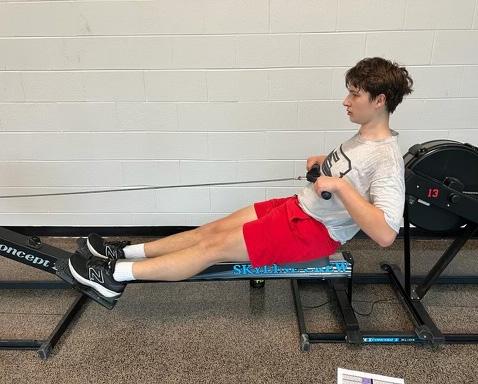
“I was the second person ever to join the team from Greenhills and now four more freshmen have joined, so I definitely see a rise in interest and demand,” said Stoffel.
Over the past two years there has been an increase in the number of students wanting to participate in the sport. As rowing
and oars. There has also been a lack of interest shown in creating a team with all Greenhills students. However some students were in favor of a merger, also known as a “co-op,”with Skyline High School.
to know different people, and begin building a bond before the season starts.”
Bussell believes the conditioning program can be important to address injuries. He says one of the program’s goals is to prevent injuries, but if an injury does occur, he notes that there are exercises that can be done in order to work out the muscles that are not directly involved with the injury.
Down the road, Bussell wants to increase participation at the sessions by informing athletes of the advantages of strength and conditioning in the offseason. He also notes the enjoyment of students spending time with friends or teammates and getting a valuable workout done in the process. Promotions for the sessions are occasionally published in the eForum newsletter, but Bussell wants to continue to spread the word of the program, especially in the summer months where the opportunities are endless due to the vacancies of the workout facilities on campus.
“I’m always down for more participation,” said Bussell. “I always recommend finding another friend or teammate to bring with you, and then it is even more fun to do it with a partner. A lot of the exercises that we do have a partner or go through it with a partner, so I think it is a nice bonding experience.”
Bussell’s stressed athletes should come in order to reach their potential. He said sessions are valuable for the wellbeing of any athlete, whether one plays a sport or is trying to stay fit.
“If you come, you will be bigger, faster, stronger and less likely to get injured,” said Bussell. “Being able to reach your potential, or get closer to your max potential of what you can perform at, is super fun. I wish I would have taken advantage of strength and conditioning as an athlete and distance runner. I didn’t think I needed it, but all athletes can certainly benefit.”
And the name—‘Get Jacked with Jarrett’: “ It’s fine,” said Bussell. “Anything that gets people to show up and workout, I support.”
“It’s kinda up in the air if we would ever officially merge with Skyline or other public schools in the area,” said athletic director Meg Seng. “I have made several inquiries in other sports about co-oping, with schools near us. When I’ve contacted AAPS [Ann Arbor Public Schools] they have indicated that they are not interested in co-oping with us because we are a private school.”
Seng said this is most likely because their superintendent would have to agree to the proposition. Seng has been informed it is a “non-starter.” However, she has not given up hope and will continue to pursue the idea.
Several other students also supported the idea of Greenhills having a merger but not Greenhills having their own team.
“I think in an idealistic situation Greenhills and Skyline would partner together so we can row with their resources and be able to row with the team during competitions,” said Cash. “I would like to merge but I wouldn’t want Greenhills to have their own rowing team.”
Stoffel, who previously rowed with other students has begun rowing independently due to not attending Skyline High School. He agrees with Cash because he prefers to row with his teammates.
“I wish they would do some kind of merger where Greenhills would take advantage of Skyline’s resources,” said Stoffel. “This way I could row with everybody and get Greenhills into the rowing district of Skyline and not have to be an independent and row as a single.”
Ice Hockey
Boy’s ice hockey is 23-2 so far, with dominant performances to win the Ann Arbor Jilek Cup, Catholic League, and Metro League. The team looks to continue their eighteen game winning streak playing Chelsea in the Region 23 semifinal on Feb. 23.

Swimming
Co-ed swimming and diving is 5-4 on the season, with their most recent meet resulting in a victory over Cabrini High School. The team looks ahead to the Catholic League finals on March 3 and 4, with the state competition on March 10 and 11.
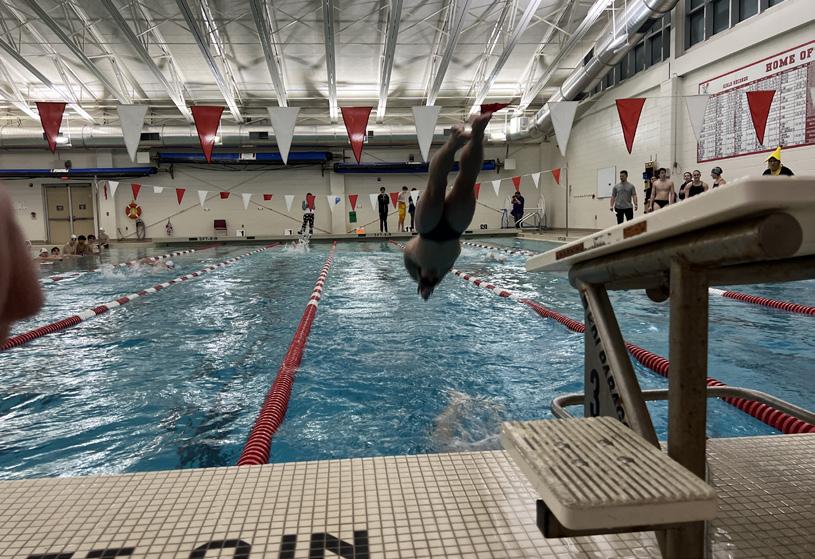
Girls Basketball
Girl’s basketball is 3-14 on the season and 2-8 in conference play. The squad honored its seniors with its game against Erie Mason on Feb. 21. A highlight of the season was defeating Whitmore Lake by one point at the Crisler Center on Dec. 8.
Boys Basketball
Boy’s basketball is 5-12 on the season, and went 3-7 in Conference play. After battling injuries for much of their campaign, they are back to full strength heading into the end of their season and looking toward a deep run in the playoffs.
